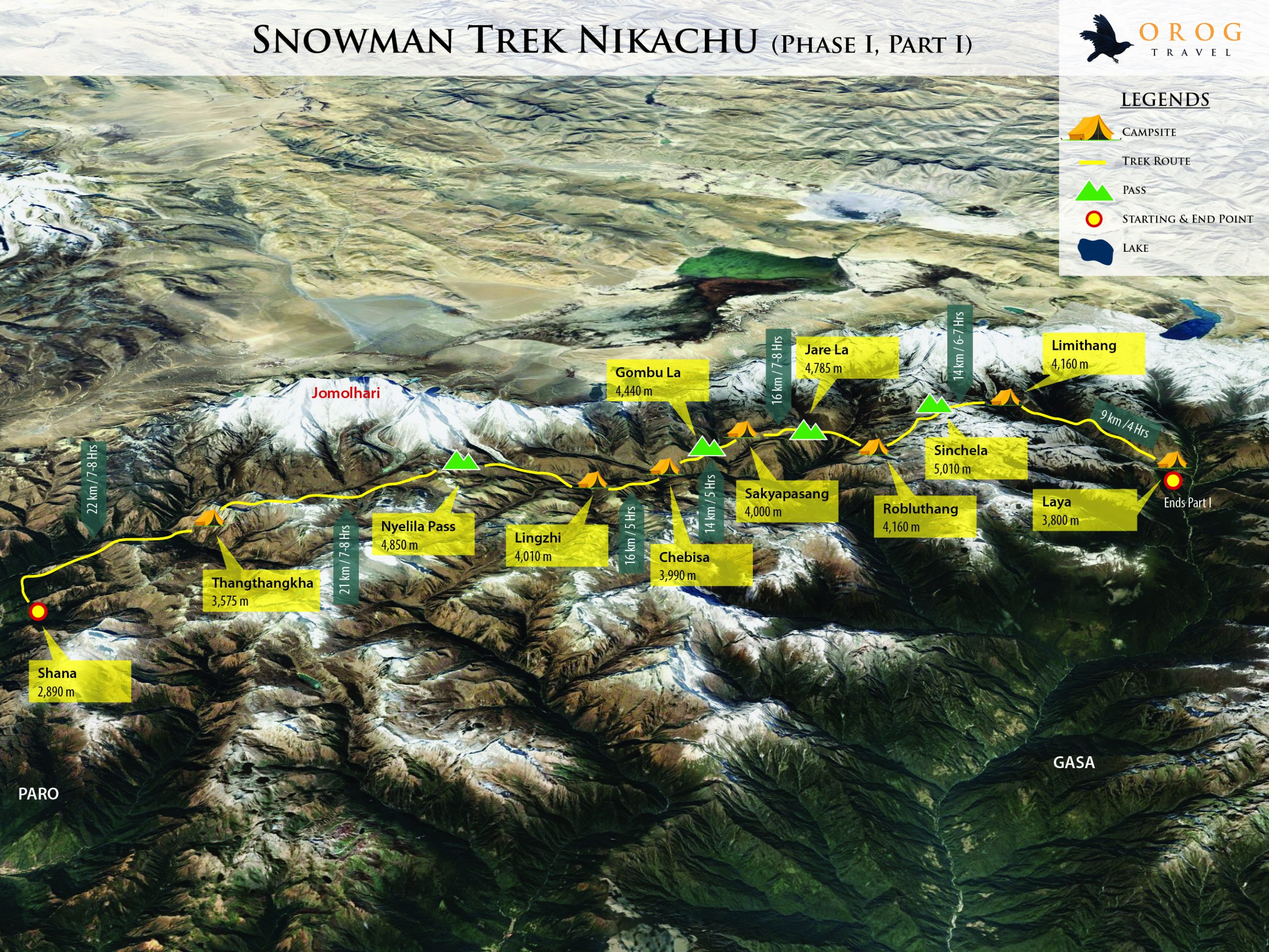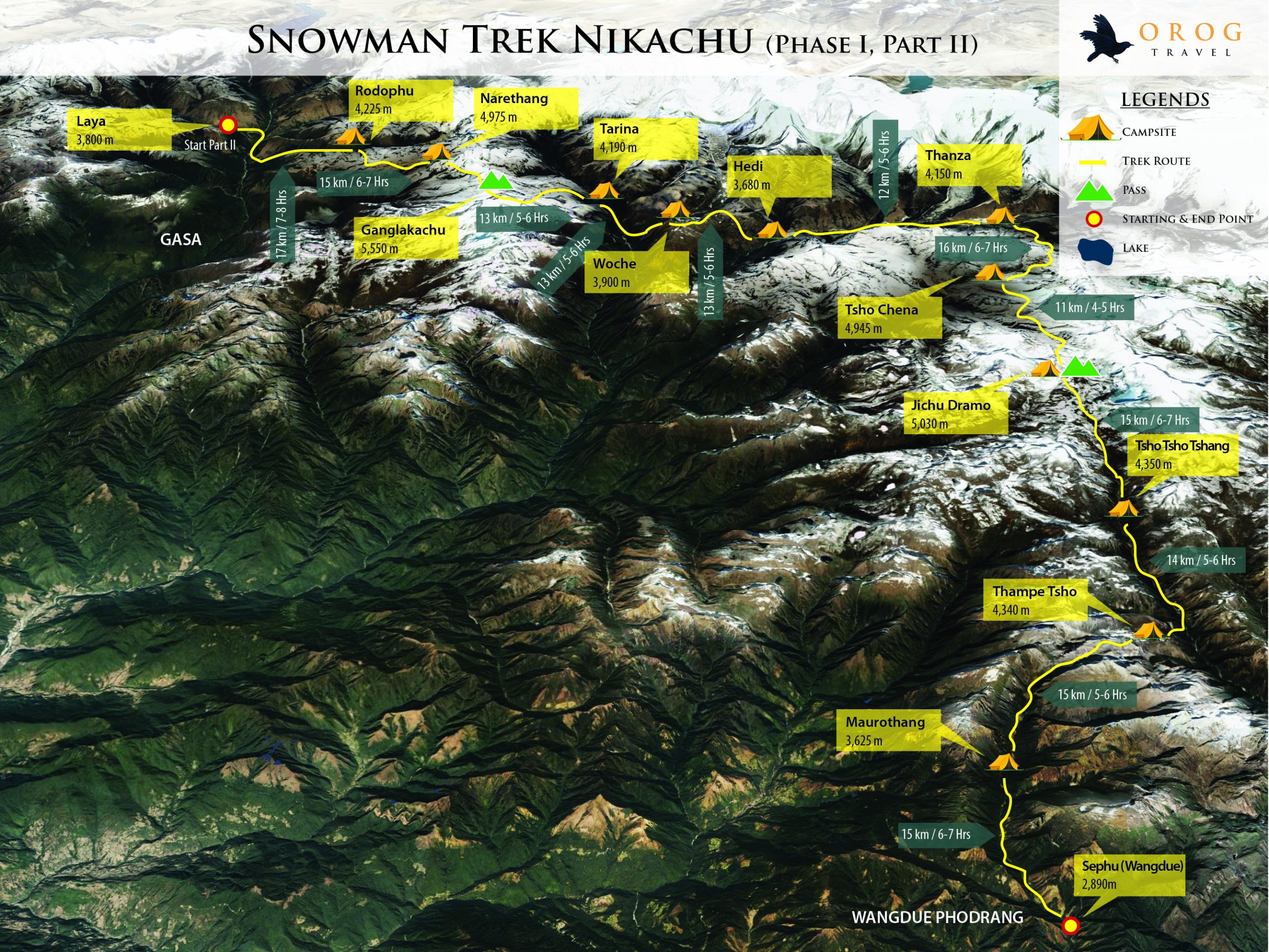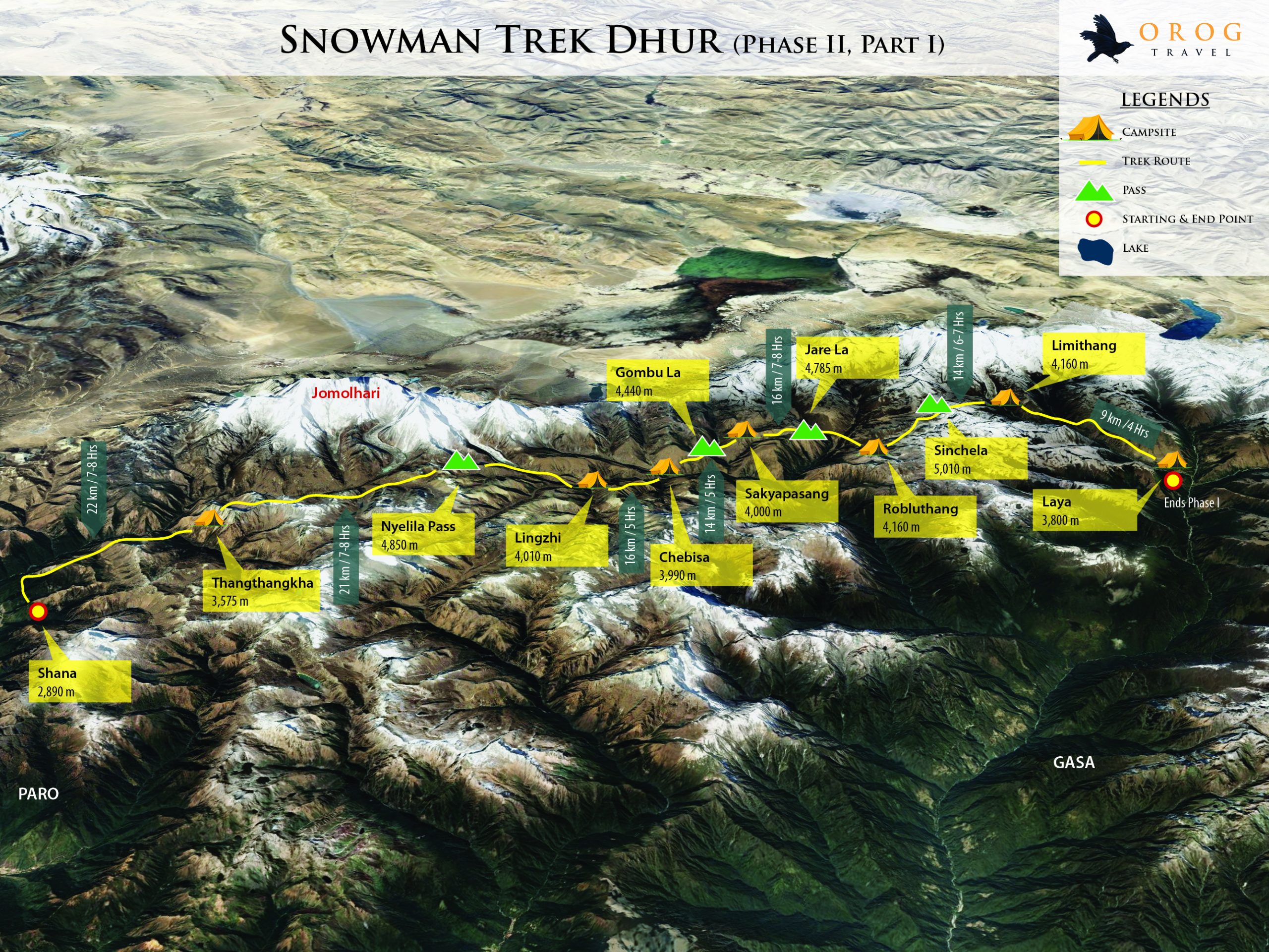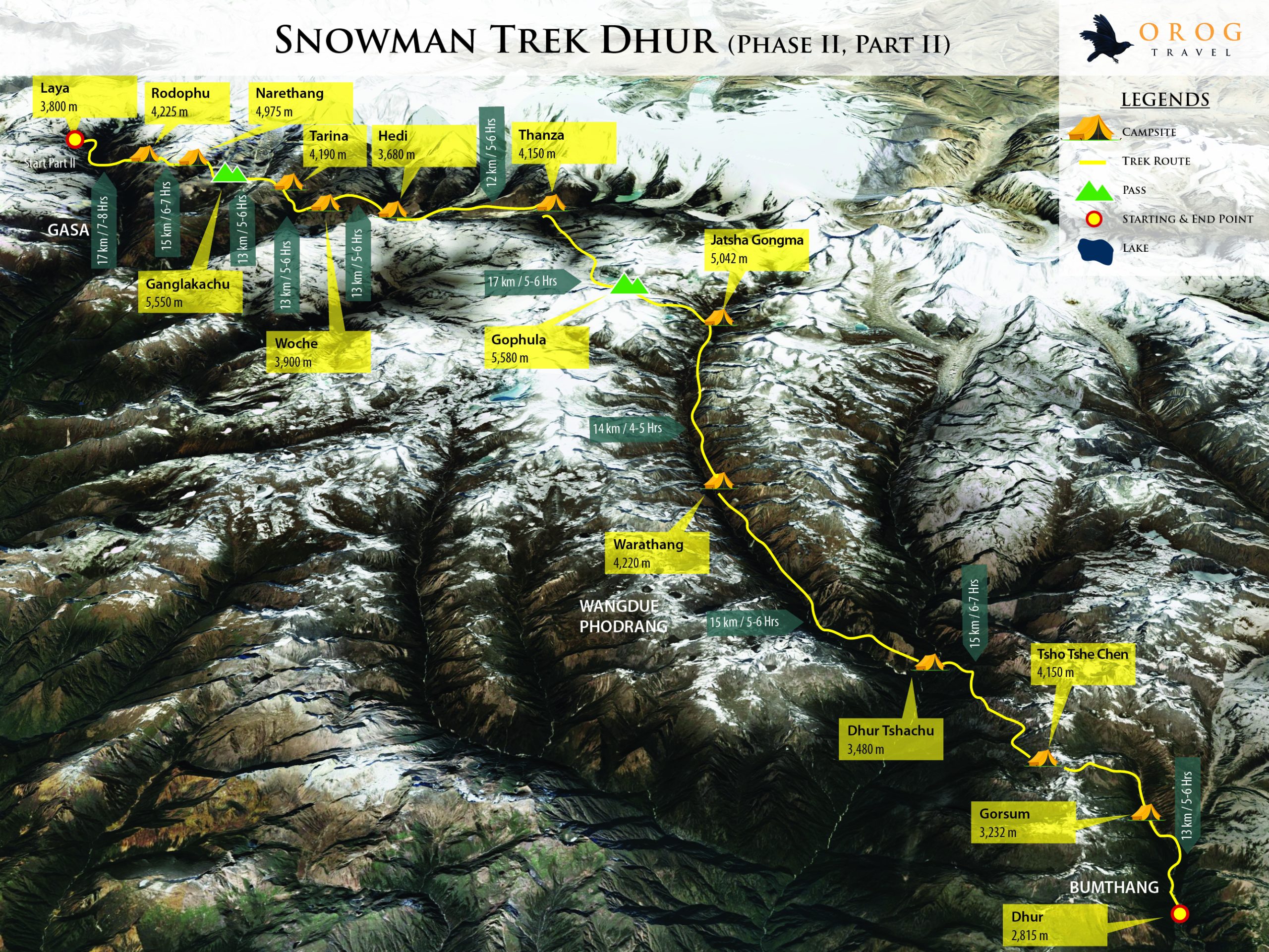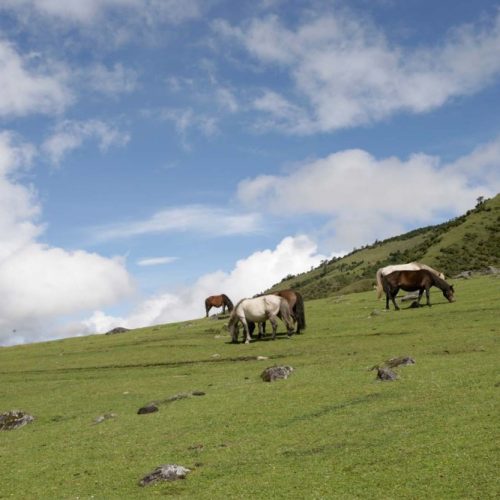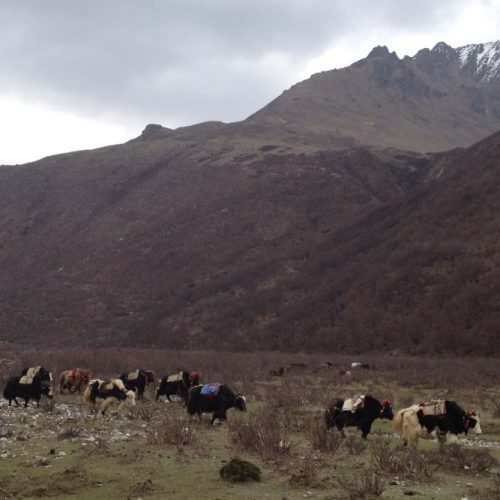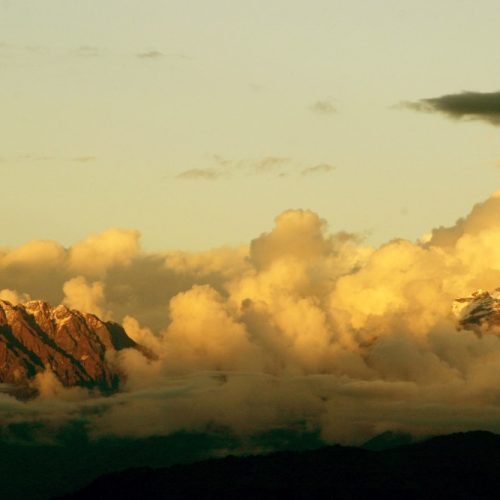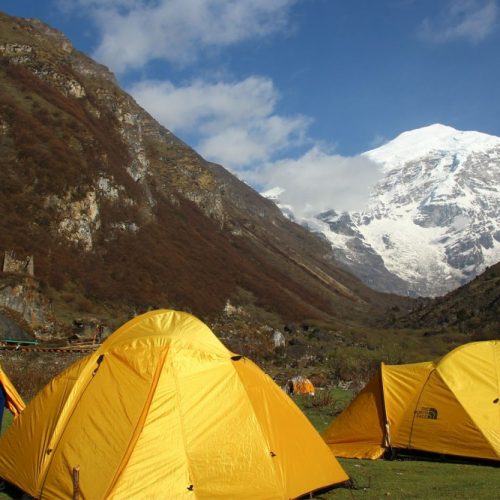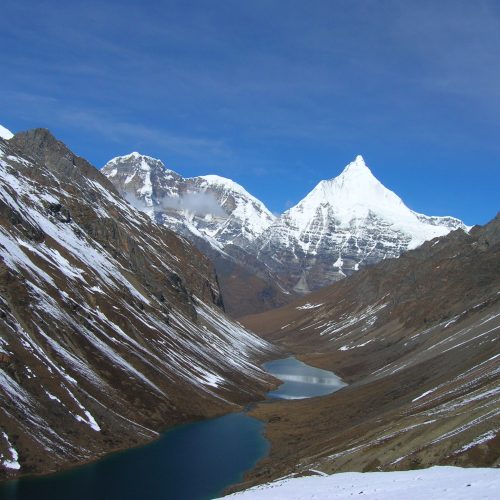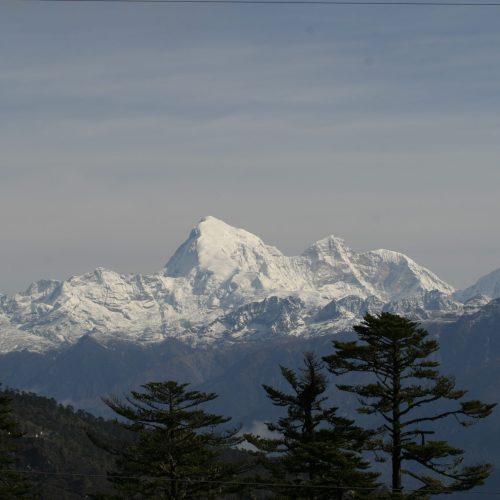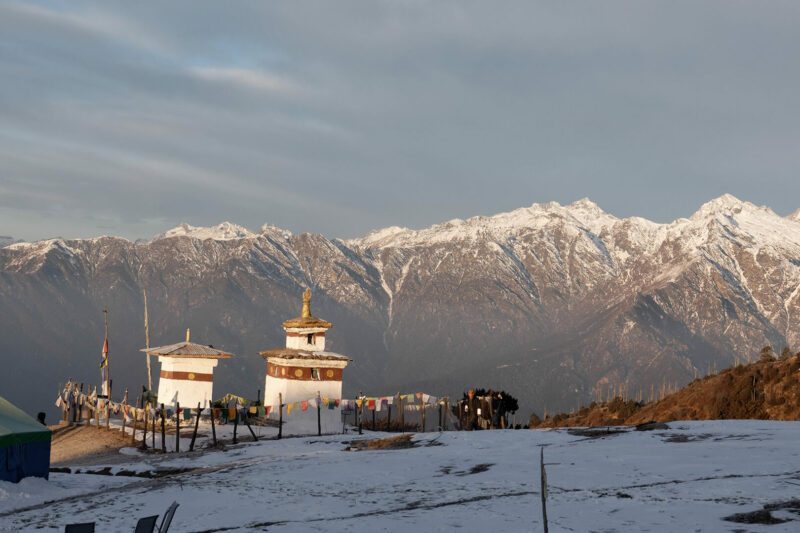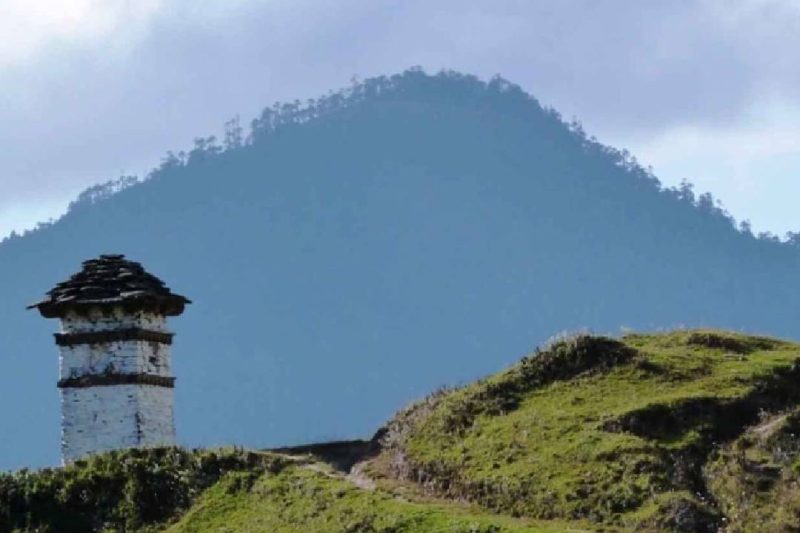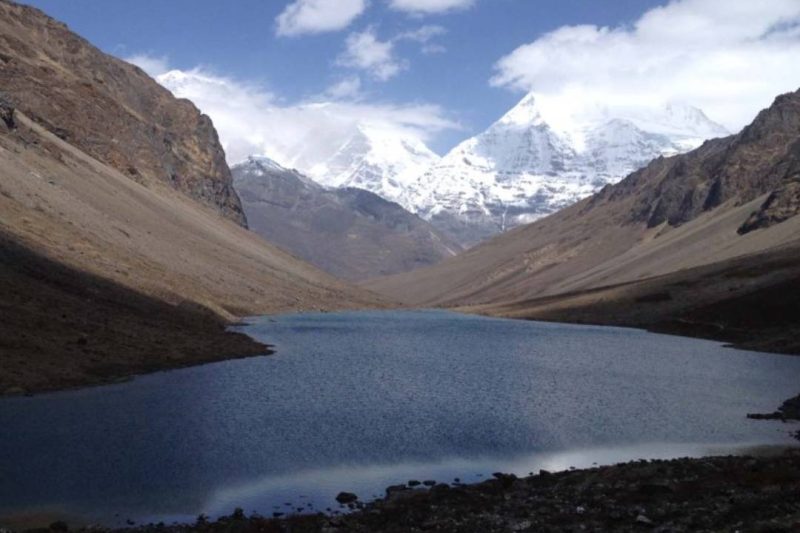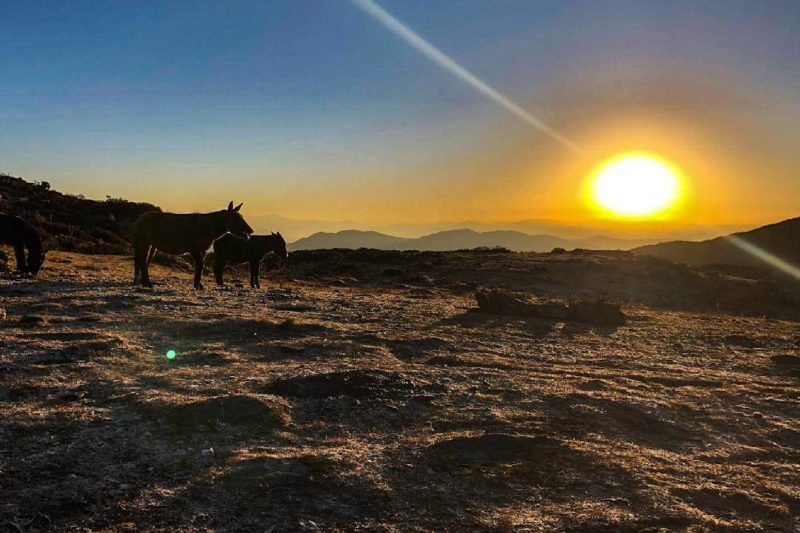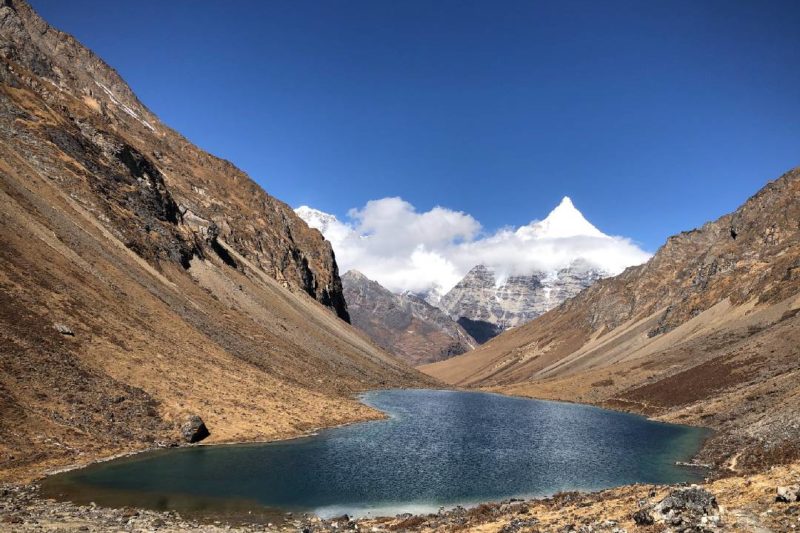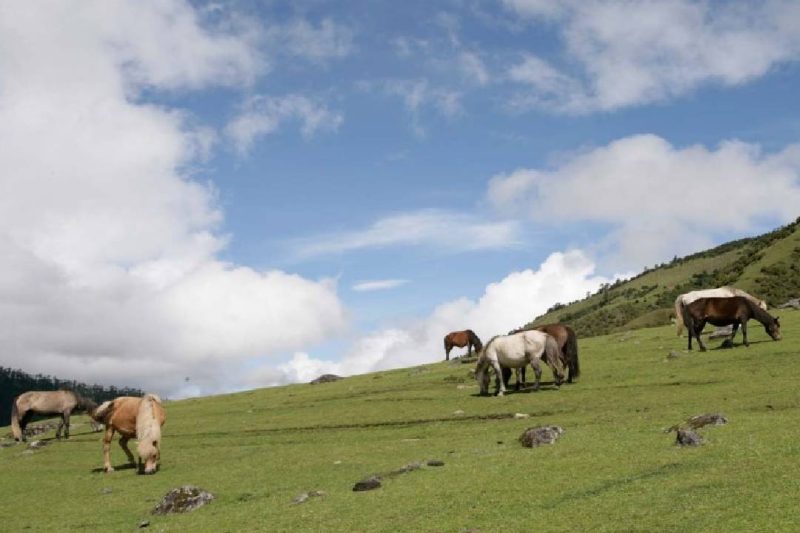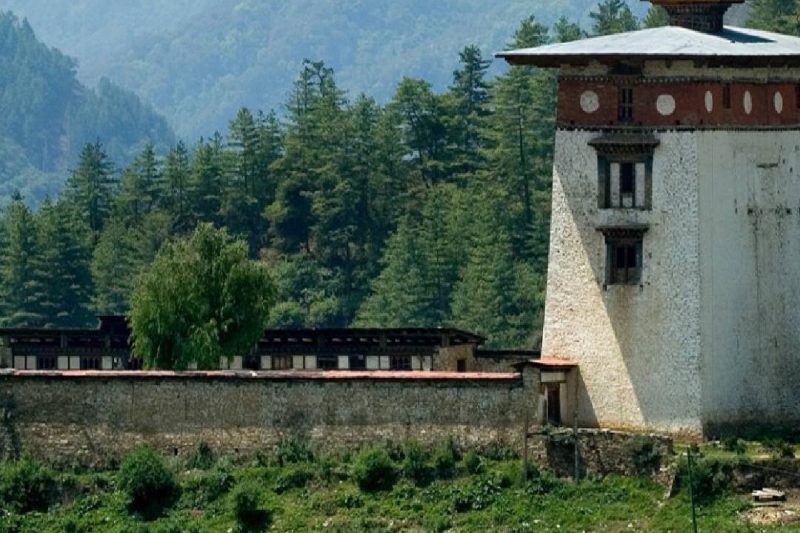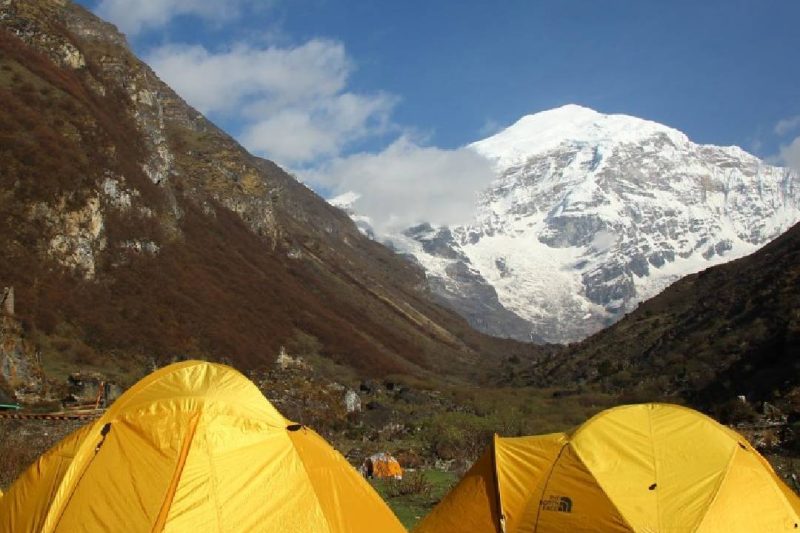Experience one of the most grueling treks in the world- The Snowman Trek. The trek is an extension of the beautiful Laya Gasa Trek and leads from Laya into high altitudes of the Bhutanese Himalayas. Experience the Lunana region along with Gangkhar Puensum and Bumthang. Camp at altitudes above 5,000m, and depending on the seasonal temperatures, sometimes in snow. The trek begins at a high altitude and two pleasure excursions in Paro will be planned to acclimatize.
Recommended time period would be the first three weeks of October since this time of the year is mostly dry with no rain or snow. Other months will experience wet, snowy, or both conditions.
Altitude in Paro: 2,280m
Onboard the aircraft, the flight is treated to spectacular views of snow peaked mountains and the Himalayan ranges. Paro airport (2,280m) is Bhutan’s only international airport where our dedicated team will receive you at the airport.
Paro Rinpung Dzong (Fortress of The Heap of Jewels)- Rinpung Dzong is an ancient fortress in traditional Bhutanese architecture with a complex of courtyards, temples, administration offices and open space surrounded by towering walls. All the buildings are equipped with huge windows with elaborate wooden carvings of traditional Bhutanese motifs. Paro Dzong is considered one of the finest examples of Bhutanese architecture and it’s one of the top tourist attractions in Bhutan. This impressive dzong is also seen during landing into Paro Airport.
National Museum of Bhutan – Ta Dzong. Originally built as a watchtower in 1649, atop a hill above the Rinpung Dzong, overlooking the whole picturesque Paro valley. Converted into a museum in 1968, its extensive collection includes astonishing antique thangka paintings, weapons and armor, and rich diversity of natural and historic artifacts.
Shagzo (Bhutanese woodturning at Sangay Wood Turning Factory) - The shagzo techniques use the age-old methods and each product is unique in shapes, sizes and colours. Learn the Shagzopa (Shagzo artisans), the essential steps in creating the elegant and functional products like wooden bowls (dapa), cups (dza phob) and plates with beautiful patterns, while keeping the ‘soul’ of the wood in it.
Altitude in Paro: 2,280m
Taktsang Monastery (Tiger’s Nest)- at 3,000m above sea level, this is one of the most sacred sites of Bhutan. It is believed that Guru Padmasambhava (Guru Rinpoche) came here on the back of a tigress in the 8th century. Lunch will be served at the Taktshang cafeteria and descend towards the Paro valley floor. The journey will take 6-7 hours in total.
Kyichu Lhakhang- one of the 108 temples built throughout the Himalayas by the Tibetan King Songtsen Gampo in the 7th century. The main chapel has roots as far back as the 7th century, with additional buildings and a golden roof added in 1839 by the penlop (governor) of Paro and the 25th Je Khenpo. Elderly pilgrims constantly shuffle around the temple spinning its many prayer wheels, making this one of the most charming spots in the Paro valley.
Distance: 22km
Estimated time: 7-8hrs
Camp altitude: 3610m
Drive to Shana, starting point of the trail. The trail consists of small ascends and descends along the river valley before entering Jigme Dorji National Park. The valley finally narrows gradually to a mere path that descends to a meadow where a camp will be set up. On a clear day, first great view of Mt. Jomolhari will be seen.
Distance: 19km
Estimated time: 5-6hrs
Camp altitude: 4080m
The trek again follows the Paro Chhu which widens into patches of alpine meadow and scanty growths of forest. Cross an army checkpoint along the way and enjoy a spectacular view of high mountain ridges and snow-capped peaks. Yaks and the herder’s homes become a regular feature of the landscape. Passing the beautiful villages Soe, Takethang and Dangochang is another highlight on this day.
After reaching Jangothang, one of the most beautiful campsites of the Himalayas, a spectacular view of Mt. Jomolhari awaits its visitors.
Camp is beneath a ruined fortress at the base of Mount Jomolhari.
Take a rest day at Jangothang will have with acclimatization. It provides plenty of possibilities for day hikes with great views of lakes and snow-capped mountains such as Jomolhari and Jichu Drake. There are good chances to spot some blue sheep on the upper slopes of the valley. Trek up to Tosoh lake or hike around the area is also possible. There are good short hiking trails in three directions. Jomolhari and its subsidiary mountain chains lie directly west, Jichu Drake to the north and there are a number of unclimbed peaks to the east.
Distance: 18km
Estimated time: 7-8hrs
Camp altitude: 4010m
Considered to be one of the longest sections of the trek, the trail continues northward, followed by a steep climb for about half an hour until Nyilila pass at 4,870m. Herds of blue sheep grazing along the slopes of the mountain can be seen at this point along with views of Mr. Jitchu Drake.
The descend then leads to the camp passing by some of the yak herder’s tent gradually arriving atLingshi basin, a charming U-shaped valley. If the weather permits, a wonderful view of Lingshi Dzong and Tserimgang and its glaciers at the north end of the valley is seen. Campsite will be next to a stone hut at proximity from Lingshi Dzong.
Distance: 10km
Estimated time: 5-6hrs
Camp altitude: 3880m
This section of the trek will be an enjoyable experience on a wide trail high above on the valley floor. Detour to the Lingshi Dzong is an option or continue on the mail trail.
A visit to the dzong with provide a view of the picturesque valley. An hour’s gradual climb will bring the trail to a cairn with some prayer flags on Talela ridge (4,100m), Nyilila pass and Mount Jitchu Drake will be visible at this point.
The trail descends towards a side valley, through Lingshi and Goyul villages. Houses in Goyul are made of stone and clustered together, which is uncommon for Bhutanese houses, making it an interesting sight. Additionally, there is Ja Goed Dzong located in Goyul village, worth a visit as it is one of the four temples built by Phajo Drugom Zhigpo, one of the most sacred temples in Bhutan.
Campsite at Chebisa village after another hour of trekking, located close to a waterfall behind this small village.
Distance: 17km
Estimated time: 6-7hrs
Camp altitude: 4220m
The trail from Chebisa village will start with a long ascent through a wide grassland, leading to Gobu La pass (4,410m). During the hike, large herds of blue sheep or herders with their yaks can be spotted. Crossing Gobu La pass, the trek will descend gradually to Shakshepasa (3,980m), a large beautiful U-shaped valley. Climbing the valley, campsite is located at Shomuthang above the river, which is a tributary of the Nochu river.
Distance: 18km
Estimated time: 6-7hrs
Camp altitude: 4160m
A climb up the valley to observe Kang Bum Mount (6,526m) and lovely edelweiss (a flower which only found in remote mountain areas). Continuing with two hours of hike which leads to Jhari La pass (4,750m) providing views of Sinche La pass- the hike for the next day. To the north is a stunning snowy peak, which is a part of Gangchheta (Great Tiger Mountain). On a clear day, the Tserim Kang along with top of the Jomolhari Mount will be visible. The campsite by the river Tsheri Jathang, is located in a wide and alluring valley. In the summer, herds of Takin – Bhutan’s National Animal will migrate to this valley and stay for about 4 months. Thus, the valley is now a takin sanctuary. Campsite at Robluthang is a brief climb away.
Distance: 19km
Estimated time: 6-7hrs
Camp altitude: 4140m
After reaching the Shinche La Pass (5,005 m), the path descends and goes through the valley. Limithang is in the Laya district where the locals will be seen wearing a unique regional dress. Camp is set up at Limithang with the Great Tiger Mountain.
Distance: 10km
Estimated time: 5hrs
Camp altitude: 3840m
The trek leads downhill through a winding river valley and enters the eastern end of Laya village. From the west of the village, spectacular views of Mt. Gangchhenta and Mt. Masagang are seen. In the village center is a community school. The campsite is located below the school.
Rest, recuperate and explore Laya village and meet local people.
Distance: 19km
Estimated time: 6-8hrs
Camp altitude: 4160m
From Laya, the trail descends to an army camp and continue following the river till the turn-off point to Rhoduphu. After lunch, the climb continues through rhododendron bushes till you reach the camp at Roduphu, just next to the Rhodu Chhu.
Distance: 17km
Estimated time: 6-7hrs
Camp altitude: 4900m
The trail follows the river and will have a steady climb to a high open valley at 4,600m to reach Tsomo la (4,900m). Tsomo La offers a superb view of Lunana, Mt. Jomolhari and Jichu Drake, and the Tibetan border. The trail crosses a flat, barren plateau at about 5,000m. Campsite at Narethang is towered by the peak of Gangla Karchung (6,395m)
Distance: 17km
Estimated time: 5-6hrs
Camp altitude: 3970m
From the camp, climb to Gangla Karchung La (5,120m). The view from the pass is breathtaking and the whole range of mountains including Jekangphu Gang (7,100m), Tsenda Kang, and Teri Gang (7,300m) can be seen. The pass descends along a large moraine. Again one has great views: a massive glacier descends from Teri Kang to a deep turquoise lake at its foot. Finally, a long descend through thick rhododendron to Tarina valley, where several good campsites along the Tang Chhu are possible.
Distance: 16km
Estimated time: 6-7hrs
Camp altitude: 3910m
The walk leads down through conifer forests following the upper ridges of the Pho Chhu, passing some impressive waterfalls. The trail then climbs over a ridge and drops to Woche, a settlement of a few houses, the first village in the Lunana region.
Distance: 17km
Estimated time: 6-7hrs
Camp altitude: 3700m
Trekking through juniper and fir forests and rhododendron bushes. Climb up to Keche La pass (4,650m) where a great view of the surrounding mountains is seen. After the pass, descend to the riverside walking through a village with a stunning view of Table Mountain and others. Follow up the river till Lhedi village.
Distance: 17km
Estimated time: 7-8hrs
Camp altitude: 4150m
On a clear day, observe great views of Table Mountain (7,100m). The trail will pass the small village of Chozo (4,090m) which has a dzong still in use. Reaching Thanza again enjoy great views of Table Mountain which forms a 3,000m high wall of snow and ice behind the village. Although there are possibilities to camp directly at Thanza, most groups prefer to camp in Thoencha.
In Thanza, walk around and experience some village life or climb up the ridge for fascinating views of lakes and mountains.
Distance: 19km
Estimated time: 8hrs
Camp altitude: 5120m
The trek starts with a climb up to the ridge, from where there is a great view of Table Mountain and Thanza valley below. Following a stream through a small valley, enjoying the view of snowcapped mountains and then climb up out of the valley to reach our campsite at Tshorim (5,125m).
Distance: 16km
Estimated time: 6-7hrs
Camp altitude: 4970m
This is one of the highlights of the trek. The day starts with a short climb to Tshorim Lake. Walking on the side of the lake enjoying a panoramic view of the Gophu La ranges. The last climb to the Gophu La pass (5,230m) is very short. After the pass descend to the base camp, walking along the ridge to enjoy a great view of Gangkhar Puensum. Climb up a pyramid-shaped peak for a better view or proceed directly to the base camp (4,970m) near the Sha Chu.
Distance: 18km
Estimated time: 7hrs
Camp altitude: 4200m
The trail follows the Sha Chhu and descends gradually to Geshe Woma.
Distance: 18km
Estimated time: 8-9hrs
Camp altitude: 4000m
The path continues following Sha Chhu until the stiff climb to Saka La begins. Visibility is poor along this part of the trail, so in order to stay on course the top of the ridge landmark. The path then descends to a couple of lakes and another short ascent is stunning. The scenery once again is beautiful with small lakes and mountain peaks
Distance: 14km
Estimated time: 5hrs
Camp altitude: 3590m
Climb to Juli la (4,400m) before descending to the riverside through dense rhododendron, juniper, and conifer forests. Then crossing a bridge and after a short climb reache Dhur Tshachu hot spring, where legend has it that Guru Padmasambhava bathed in the 8th century.
Distance: 16km
Estimated time: 8-9hrs
Camp altitude: 3850m
From the hot springs, it is a long and steady climb again with great views of mountains in Lunana. Also come across blue lakes and yak herder huts.
Distance: 21km
Estimated time: 13hrs
This is the last day of the trek. The path follows the Chamkhar Chhu, descending gradually with a few climbs in between. The trek ends here arriving at Duer village. Pick up will be organized at the trek endpoint for transfer to the hotel in Bumthang.
Bumthang valley (Chamkher)
Jambay Lhakhang- Belonging to the 108 temples built by the Tibetan King Songsten Gampo in the 7th century. It is believed that a supine demoness was causing obstruction to the spread of Buddhism, and the temples were constructed on her body parts that spread across Tibet, Bhutan and the borderlands.
Kurjey Lhakhang- The large, active and important temple complex is named after the body (kur) print (jey) of Guru Rinpoche, which is preserved in a cave inside the oldest of the three buildings that make up the complex.The first temple, also the most sacred one, was erected in 1652 and is where the body print of Guru Rinpoche is protected. The second one was constructed by Ugyen Wangchuck, the first king of Bhutan, and the third temple was established by Ashi Kesang Wangchuck, queen to the third king, in 1984.
Bathpalathang- Visit the Red Panda Brewery. First established beer brewery in Bhutan founded by a Swiss national. Observe the process beer production and taste freshly brewed beer and cheese.
Lhodrak Kharchu Monastery- The renowned monastery was blessed by Guru Rinpoche and is the seat of the successive Namkhai Nyingpo reincarnates.
Altitude in Punakha: 1300
Distance: 212km
Estimated time: 8hrs
Drive to Punakha valley with sightseeing en-route.
Altitude in Paro: 2,280m
Distance: 125km
Estimated travel time: 4hrs
After breakfast, we visit the Sangchhen Dorji Lhuendrup Lhakhang, a temple plus nunnery Sangchhen Dorji Lhuendrup Lhakhang Nunnery- Perched on a hilltop overlooking the beautiful Punakha and Wangduephodrang valley.
Surrounded by rich lush green pine forest the nunnery complex is a true expression of Bhutanese architecture portraying strong traditional values.
Punakha Dzong (Palace of Great Happiness)- Built-in 1637, it is said to be the most spectacular dzong in Bhutan. Punakha Dzong was built at the confluence of two major rivers in Bhutan, the Pho Chhu and Mo Chhu, which converge in this valley.
In addition to its structural beauty, until the mid-1950s, it still served as Bhutan’s capital and the seat of the government. All of Bhutan’s kings have been crowned here, and it has witnessed the memorable wedding of the King of Bhutan, Jigme Khesar Namgyel Wangchuck to Jetsun Pema in 2011.
Chimi Lhakhang- Hike to the Temple of Fertility (altitude: 1,500m). An enjoyable hike, taking about 30 minutes through the rice and mustard fields and the uniquely decorated houses of Lobasa Village.

